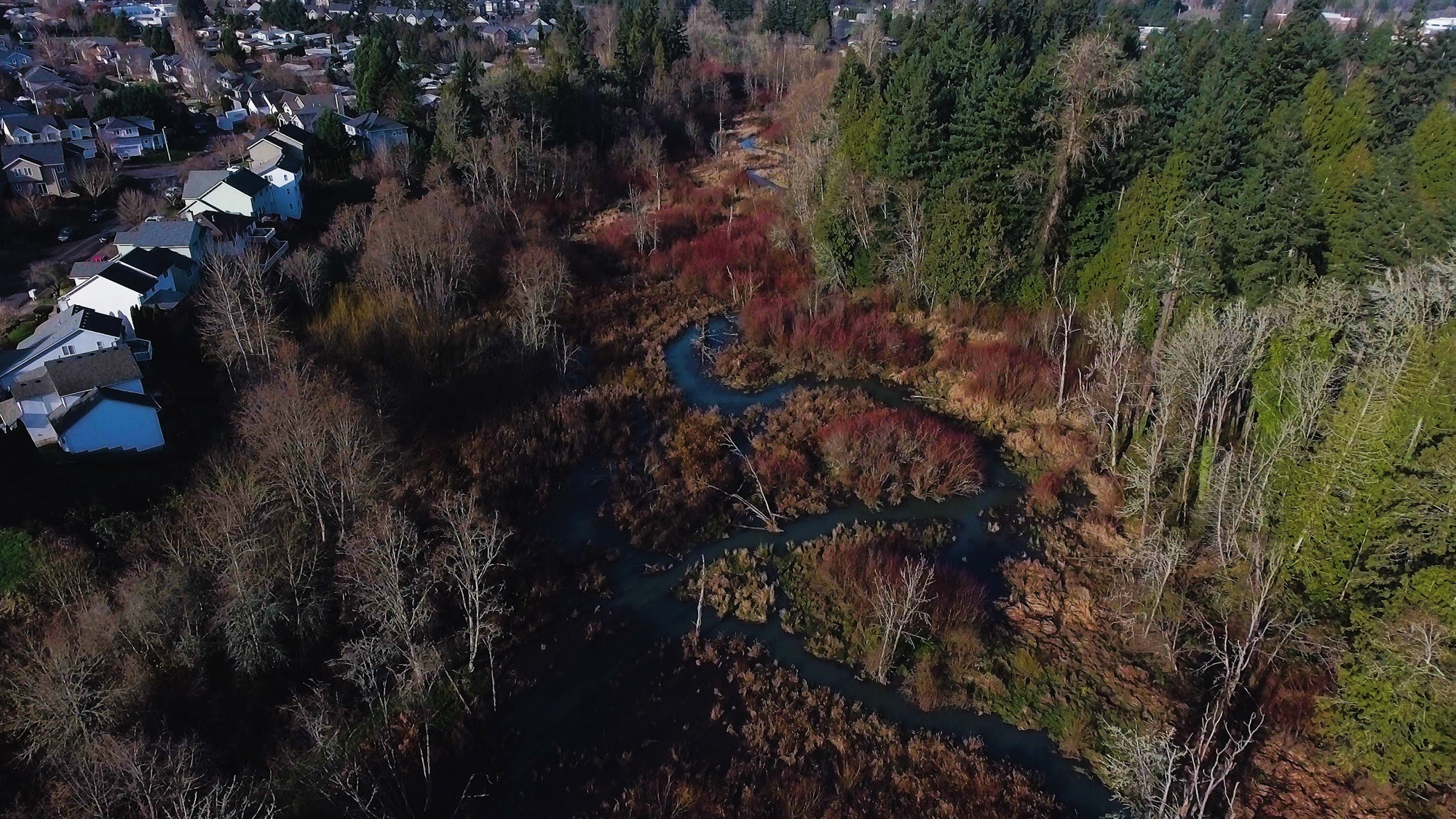Between 2005 and 2025, Tree for All Partners restored more than 150 riparian miles and planted more than 17 million native trees and shrubs. More than 40 case studies were published to document the efforts that made it possible.
Amenities for Wildlife, People and Plants Alike
The Cedar Creek-Stella Olsen Enhancement Project has helped a small, yet booming, Washington County town restore an iconic city park and nearly one and a half miles of streamside habitat along Cedar Creek, one of the many tributaries that flow into the Tualatin River.
The Site
First planting: 2006
Size: 27 acres
Stream length: 7,194 feet
Total to date: 103,673 plants
Plant communities: Riparian Forest, Scrub Shrub
The Stella Olsen Project site sits close to the City of Sherwood’s picturesque town center. The park owes its name to Oscar Olsen, who donated nearly eight acres to the City of Sherwood in the early 1950s as a memorial to his wife, Stella, who passed away in 1940. Today, at nearly 25 acres, Stella Olsen Memorial Park offers something for everyone. Its wetlands, ponds and upland forests provide opportunities for bird and wildlife viewing as well as for quiet strolls in nature. The developed sections have playground swings, picnic shelters and a musical venue that offer an array of amenities for residents and visitors of all ages.
Originally inhabited by the Atfalati tribe, the site that became the city of Sherwood was settled by farmers in the mid-1800s. It soon became the supply brickyard for buildings in the growing city of Portland, 20 miles to the east. In 1911, Sherwood’s municipal footprint of one square mile was home to just 350 people. Today, while still retaining its small-scale charm, it supports 16,000 residents and more than a dozen parks within a four mile radius.
The Challenge
Over time, the park’s natural areas had become scarred by human disturbance. Native groundcover and shrubs were choked out by English ivy and Himalayan blackberry. The banks along the ponds and Cedar Creek showed signs of serious erosion, and the buffer between the streamside habitats and the grassy slopes and parking lots offered only sparse native canopy plant diversity.
The Transformation
More than a decade of restoration work was required to complete the Stella Olsen Enhancement Project. In that time, partner groups including Friends of Trees and Raindrops to Refuge, along with hundreds of volunteers, installed nearly 100,000 native plants, shrubs and trees. The natural areas already had a reasonably good supply of large native trees, including large Red alders, cottonwood and Big-leaf Maples. This wetland and upland forest community was enhanced by plantings of Western red-cedars, snowberries and Red-twig Dogwoods. In total, more than 15 acres of invasive plants and trees were removed. In addition to improving overall water quality, partners sought to increase and enhance aquatic habitat and diversity. To accomplish that and much more, Clean Water Services placed large woody debris, left standing snags in the streams and created off-channel habitat for fish, amphibians and insects. Now, as walkers cross the elevated boardwalks over the restored ponds and wetlands, they can enjoy the sounds and smells of the park’s native plants and animals. Not only is The City of Sherwood managing the site to address its stormwater mandates, it’s providing a wonderful place for the entire community to enjoy nature-based and recreational activities, including a new playground, pavilion and shelter, as well as the boardwalk.
59 native plant species
Plant cover change*
Native shrub/tree: +81%
Native herbaceous: insufficient data
Invasive: +16%
* Figures measure increase/decrease since monitoring began in 2007. Shrub/tree and herbaceous cover are measured only in plant communities appropriate to those species.




































